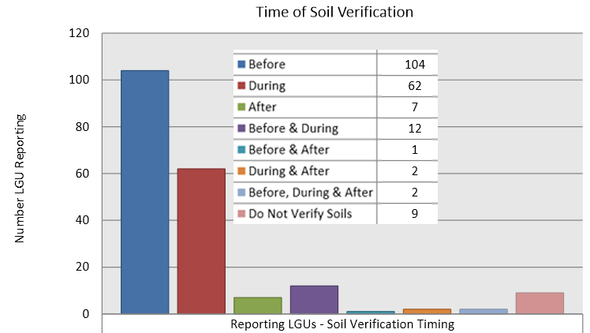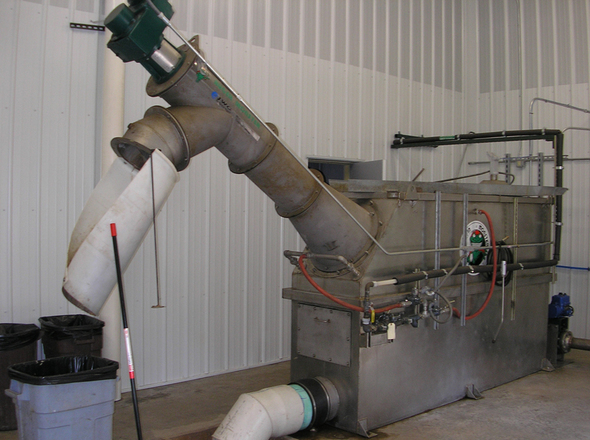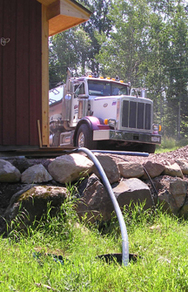|
The 2012 edition of the MPCA SSTS Annual Report is now available on the MPCA website. Thank you to everyone who contributed to this publication. The information contained in the report becomes more valuable each year because the data we receive gets better each year in light of local program efforts such as SSTS inventories and more inspections.
We share the information with many stakeholders, including lawmakers who control the amount of state resources allocated to this important area.
Creating the Annual Report provides an opportunity for the SSTS program to gather answers to a wide variety of questions; for example, when do most counties perform their soil verification testing -- before, during or after construction? As the following graph shows, the majority of LGUs that responded to the question reported they perform soil testing prior to construction.
 Barb McCarthy has been the editor of the SSTS Annual Report, but since she has been reassigned within the MPCA to work on a new data management initiative, the new editor will be Aaron Jensen (see story below). We look forward to receiving information for the 2013 report.

 By Gretchen Sabel
Cook County is the
farthest north and east county in Minnesota, with Lake Superior to the
south and Ontario to the north. There was not enough farmland for land
application of septage in Cook County. Pete Gresczyk from G&G Septic
looked into purchasing land he could use for hay and septage
application. The cost of this land would be significant, and there were
still concerns about weather difficulties that would limit the time he
could land apply.
As an alternative, he bought a lot
in the Gunflint Business Park in Grand Marais, where city sewer is available. Then he bought a Honey Monster* (pictured above) and installed it in a new
shed that he also uses for his trucks. There is also a 7000 gallon
storage tank under the building. This solved his problems.
(*Honey Monster: a machine that removes non-digestible items from septage so it can be piped to a municipal wastewater plant.)
|
At Pete’s shop in Grand Marias, Tom Nelson from the Grand
Marias wastewater plant was present. He talked about how the septage Pete
brings in from all over Cook County is run through the Honey Monster to
remove rock and other trash. From this device, the liquid portion
discharges to a storage tank under the floor and from here is metered
into the Grand Marais treatment plant. Nelson has
worked with Pete to identify discharge rates for different types of
waste that won't cause plant disruptions.
Pete travels hundreds of miles collecting septage from
as far as the end of the Gunflint Trail. He can bring two or three loads
back to the shop at a time. When he returns, he discharges the contents
of the tank into the Honey Monster. It takes about 20 minutes to run a
truckload through the device. Rocks and other heavy items are caught in
the first two traps. The device started out with one rock trap and Pete
added a second trap. The remaining trash is removed and squeezed to a
semi-dry paste that is captured in trash cans and sent to the landfill.
The system produces about two bags of "monster mash" a day. There was no
noticeable odor in the shop and it was very quiet in operation.
This
solution would work for situations where a treatment plant and
maintainer can work together to fine-tune the discharge to meet the
needs of both parties. Petesays this operation is a very good
business model and makes his business more stable and
weather-proof.
 The new MPCA SSTS policy and planning person is Aaron Jensen. He grew up on a dairy farm in central Minnesota near Brooten, where his parents still live and operate the family farm. He received his bachelor's degree in natural resource management at the University of Minnesota, Crookston.
After school he became a regional manager for a prairie management company focused on planting native grasses and enhancing properties for wildlife. Most recently he worked for the Douglas County Land and Resource Management office in Alexandria as an environmental planning technician.
Between those jobs he dabbled in driving trucks, working with an excavating company that installs septic systems, and also working as an agronomy production specialist. "My interest in SSTS started as I was installing septic systems and quickly grew while working with Douglas County managing their SSTS program," Jensen says.
He and his wife, Toni, have two children, one of them born just recently on July 9.
With a new job, new baby and currently looking for a new home in the metro area, Jensen says he's feeling a little overwhelmed right now, but adds he's sure "Everything will fall into place in no time."
In his spare time Jensen enjoys hunting, fishing, archery target shooting, and just spending time with his family. His new role with the MPCA will include coordinating MPCA SSTS information on the web and producing the MPCA SSTS Annual Report.
"I am excited to join the SSTS team at the MPCA and I look forward to meeting new people and furthering my knowledge and career within the SSTS industry and the State of Minnesota," he says.
|
|